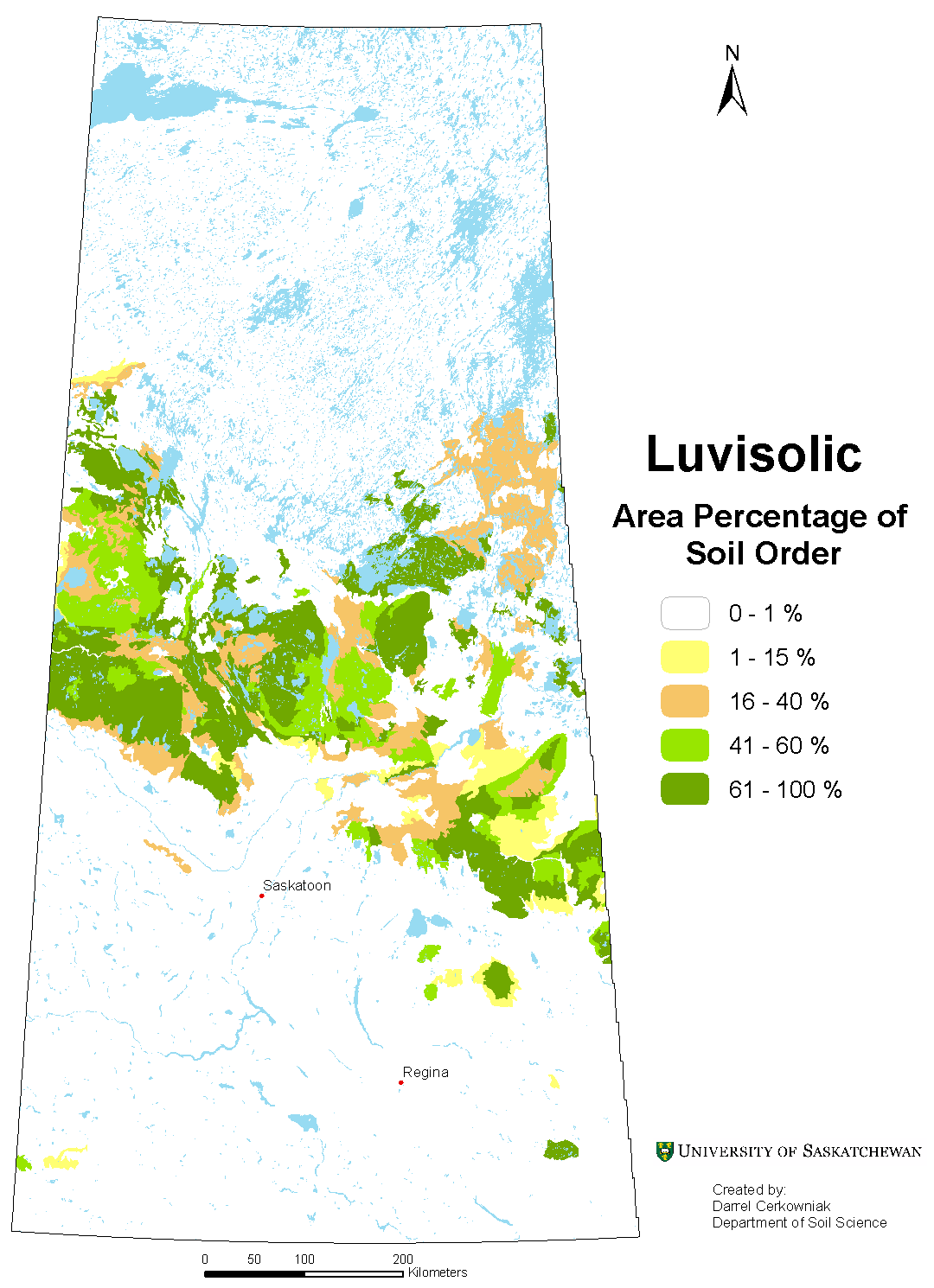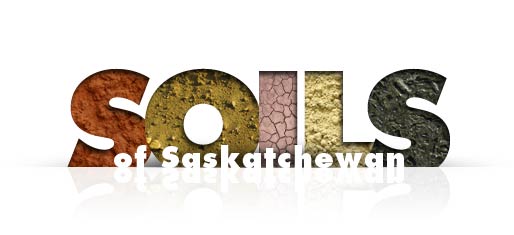Luvisolic
Luvisolic soils are the dominant forest soil of Central Saskatchewan. They occur on loamy glacial till deposits throughout this region, as well as in regional uplands such as Moose Mountain in southern Saskatchewan. The glacial deposits are derived from sedimentary rocks and have an abundant supply of base cations such as calcium and magnesium. Luvisolic soils typically have a grayish, sandy or silty Ae horizon overlying a B horizon that has higher clay content than either the Ae or the C horizon. This textural-contrast horizon is denoted as the Bt horizon. The structural units (peds) in the Bt horizon may be coated with a thin, shiny film of clay, which is evidence for the physical movement of clay in the soil-forming process called lessivage. The C horizon of the Luvisolic is usually contains calcium carbonate (lime). When cultivated the surface Ae horizon is exposed and the soils often have a grayish appearance and hence this region is known as the Gray soil zone in Saskatchewan.

